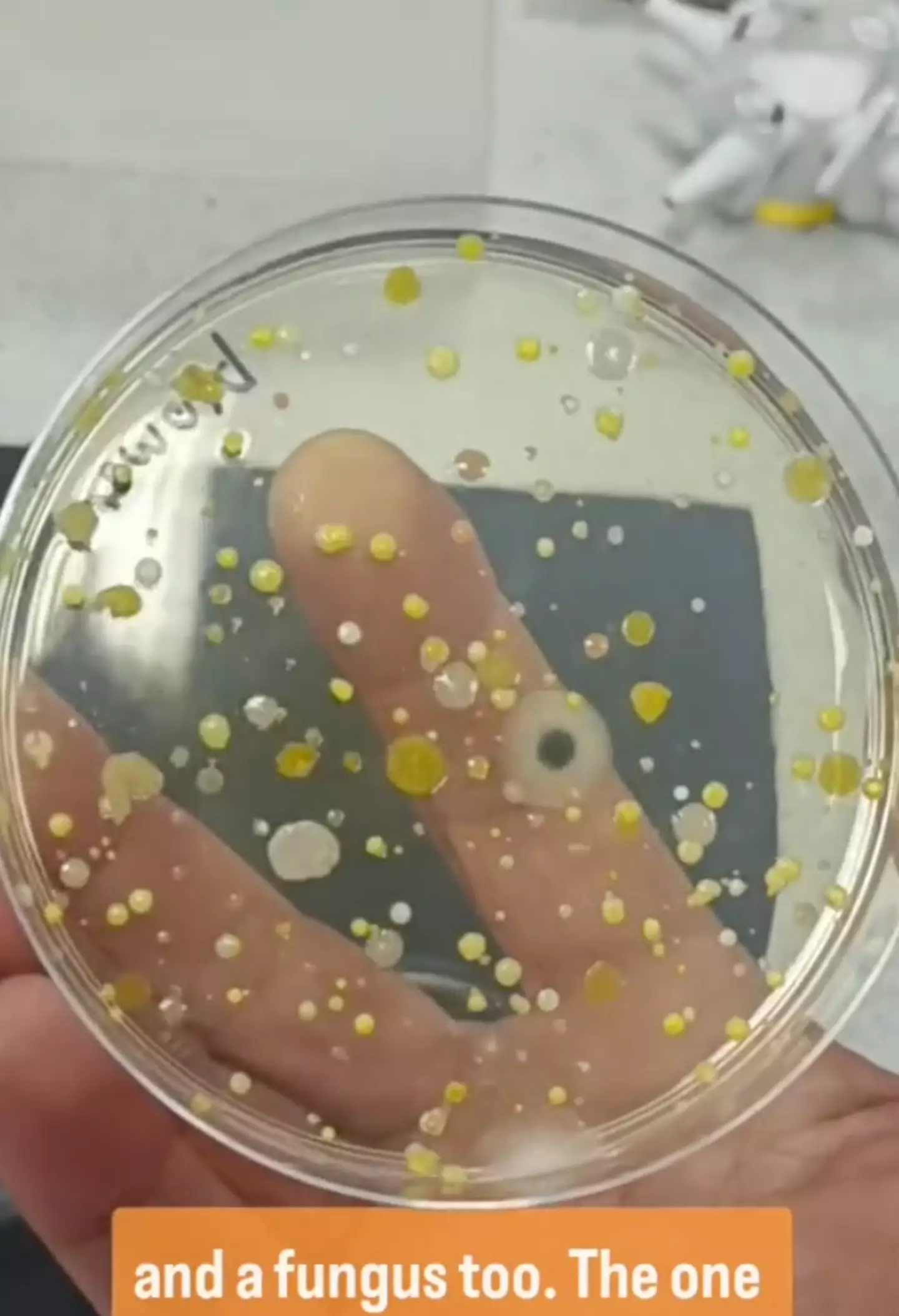Hand dryers in public restrooms are a common sight, hailed as an eco-friendly alternative to paper towels. But what if these devices are far from sanitary? A recent experiment conducted by scientist Ruth, known as Devon Science on TikTok, reveals shocking insights about the hygiene risks posed by hand dryers. With over 4.7 million views, her findings have sparked a heated discussion about whether these machines are as clean as they claim to be—or if they’re just blowing bacteria right back at us.
Let’s dive into the unsettling results of her study and explore the reasons why you might want to think twice before using a hand dryer.

This might not be the best way to dry your hands in public (Getty Stock Image)
The Experiment That Exposed the Truth About Hand Dryers
Ruth’s viral experiment was simple yet powerful. She placed a sterile petri dish under a public hand dryer, allowing the air to blow directly onto the plate. Then, she left the dish overnight to see what might grow. For comparison, she waved another petri dish through the air without using a dryer.
The results? Harrowing.
- Hand Dryer Dish: This dish was teeming with bacteria and fungi, showing yellow spots, black smudges, and white splotches.
- Air-Dried Dish: The control dish that mimicked air-drying by waving hands stayed completely clear, proving it to be the more hygienic option.
What’s Lurking Inside Hand Dryers?
To dig deeper, Ruth swabbed the interior of the hand dryer itself. The cotton swab turned black from the grime inside the machine, and when placed on a petri dish, it grew multiple types of bacteria similar to those found on the dish exposed to the dryer’s air.
Her conclusion?
“The bacteria are actually living inside the machine.”
This raises a disturbing question: Are hand dryers simply recycling germs from their internal components and blowing them onto freshly washed hands?
Where Does the Bacteria Come From?
Hand dryers don’t produce bacteria on their own—they simply act as carriers. But where are these germs coming from?
- Toilet Air Contamination: Flushing toilets, especially without a lid, releases aerosolized bacteria and viruses into the air. This “toilet plume” can linger in the restroom, finding its way into hand dryers.
- Moist and Warm Environments: The interiors of hand dryers are warm and damp—perfect conditions for bacteria and fungi to thrive.
- Lack of Cleaning: Many public hand dryers are rarely cleaned, allowing grime and germs to accumulate over time.
Are Paper Towels or Toilet Paper Better Options?
With hand dryers under scrutiny, the next logical question is: Are there safer alternatives?
Paper Towels:
- Paper towels are often considered the most hygienic option for drying hands.
- Studies show they remove bacteria effectively by physically wiping them off the skin.
- The downside? They generate waste, which is why many facilities have opted for hand dryers.
Toilet Paper:
In another part of Ruth’s experiment, she tested toilet paper by rubbing it on a petri dish. While some bacteria grew, it was far less than what was found in the hand dryer dish.
Air Drying:
Air drying by waving your hands might take longer, but it emerged as the cleanest method in Ruth’s study. No bacteria were detected on the petri dish exposed to air drying.

Is this what you want on your hands? (TikTok/@devonscience)
The Hidden Risks of Using Hand Dryers
Hand dryers may seem harmless, but their potential risks extend beyond bacteria exposure. Here’s what to consider:
- Cross-Contamination: Hand dryers can spread germs to other parts of the restroom. Bacteria blown into the air can settle on surfaces, increasing the chances of contamination.
- Health Risks for Vulnerable Individuals: For people with weakened immune systems, exposure to high levels of bacteria can lead to infections.
- False Sense of Cleanliness: Many users assume hand dryers are clean because they’re “touchless,” but Ruth’s findings suggest otherwise.
What Should You Do?
If you’re concerned about the hygiene of hand dryers, here are some practical tips:
Avoid Hand Dryers Whenever Possible
- Opt for paper towels if they’re available.
- Use toilet paper sparingly if no other options exist.
- Air dry your hands by shaking them or gently waving them in the air.
Carry Your Own Supplies
- Pack travel-sized tissues or a clean handkerchief to dry your hands in public restrooms.
- Consider keeping alcohol-based hand sanitizer on hand for extra cleanliness.
Advocate for Better Hygiene Practices
- Encourage public facilities to maintain or reintroduce paper towels as an alternative.
- Push for regular cleaning and maintenance of hand dryers to minimize bacteria buildup.
The Environmental Dilemma: Hand Dryers vs. Paper Towels
One reason hand dryers have become so widespread is their perceived eco-friendliness. They reduce waste compared to paper towels, which require resources for production and disposal. However, the hygiene risks of hand dryers raise questions about whether this trade-off is worth it.
@devonscience Urghh, don't use a hand dryer😱🦠 —– Update: thank you for all your comments & suggestions. Totally blown away by how far this little video has reached 😮 I'm planning on doing some update videos on this experiment and will post on here, as well as on our FB & IG pages, which you are welcome to follow as well 😉 Thank you, Ruth (from Devon Science) #germs #publictoilet #bacteria #dirty #gross #justdont #scienceteacher #handwashchallenge #handdryer #science #scienceexperiments #microbiology #scienceproject #lesson #handdryer #handdryerbacteria ♬ original sound – Devon Science
Balancing Hygiene and Sustainability
To address both concerns, public facilities could:
- Invest in high-quality hand dryers with built-in HEPA filters to trap bacteria.
- Provide biodegradable paper towels to reduce environmental impact.
- Educate users about proper hand-drying techniques for optimal hygiene.
What Ruth’s Experiment Taught Us
Ruth’s simple but revealing study highlights a fundamental flaw in how we think about public hygiene. While hand dryers are marketed as a clean and green solution, the reality is far less appealing. By harboring and dispersing bacteria, these devices may be undermining the very hygiene they’re meant to promote.
The next time you find yourself in a public restroom, think twice before reaching for that hand dryer. Sometimes, the simplest option—like shaking your hands dry—is the best choice.
Conclusion: Ditch the Hand Dryer, Choose Hygiene
The evidence against hand dryers is hard to ignore. Ruth’s experiment serves as a wake-up call, exposing the hidden risks of these seemingly innocuous machines. Whether you choose to air dry, use toilet paper, or carry your own towels, prioritizing hygiene over convenience is a small but impactful step.
So, the next time you’re tempted to stick your hands under a dryer, remember: flinging your hands dry might not just feel better—it might also keep you safer.


